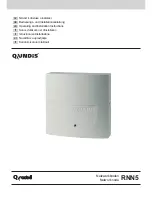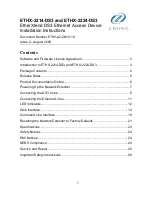
G.shdsl Router User Manual
>> protocol
Configure protocol type
direction
Configure direction mode
src_ip
Configure source IP parameter
dest_ip
Configure destination IP parameter
port
Configure port parameter (TCP and UDP only)
tcp_flag
Configure TCP flag (TCP only)
icmp_type
Configure ICMP flag (ICMP only)
description
Packet filtering rule description
enable
Enable the packet filtering rule
begin
The schedule of beginning time
end
The schedule of ending time
action
Configure action mode
DoS Protection
DoS protection parameters can be configured in dos_protection menu. Move the cursor to
dos_protection
and press enter.
>> syn_flood
Enable protection SYN flood attack
icmp_flood
Enable protection ICMP flood attack
udp_flood
Enable protection UDP flood attack
ping_death
Enable protection ping of death attack
land_attack
Enable protection land attack
ip_spoff
Enable protection IP spoofing attack
smurf_attack
Enable protection smurf attack
fraggle_attack
Enable protection fraggle attack
A SYN flood attack attempts to slow your network by requesting new connections but not
completing the process to open the connection. Once the buffer for these pending connections is
full a server will not accept any more connections and will be unresponsive.
ICMP Flood: A sender transmits a volume of ICMP request packets to cause all CPU resources to
be consumed serving the phony requests.
UDP Flood: A sender transmits a volume of requests for UDP diagnostic services which cause all
CPU resources to be consumed serving the phony requests.
A ping of death attack attempts to crash your system by sending a fragmented packet, when
reconstructed is larger than the maximum allowable size. Other known variants of the ping of death
include teardrop, bonk and nestea.
A land attack is an attempt to slow your network down by sending a packet with identical source
and destination addresses originating from your network.
IP Spoofing is a method of masking the identity of an intrusion by making it appeared that the traffic
came from a different computer. This is used by intruders to keep their anonymity and can be used
in a Denial of Service attack.
A smurf attack involves two systems. The attacker sends a packet containing a ICMP echo request
97






































